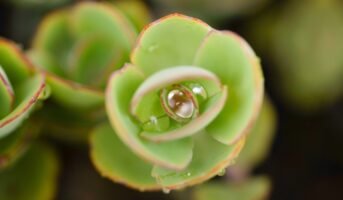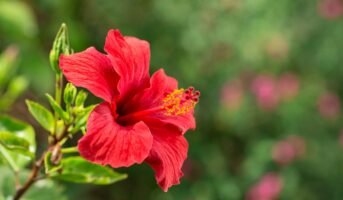What is Tradescantia Fluminensis?
Tradescantia Fluminensis is an evergreen trailing herbaceous perennial shrub belonging to the Commelinaceae family. South America is home to the spiderwort species Tradescantia fluminensis. The thick, sticky secretion that forms when a stem is cut gives spiderwort its name. When this substance hardens, it takes on the appearance of a spider web and becomes silky and threadlike.
What is the common name of Tradescantia fluminensis ?
This plant is one among many that go by the name wandering Jew; however, it is now also frequently called wandering trad. It is also known as wandering willie, inch plant, river spiderwort, and small-leaf spiderwort.

Source: Pinterest
Tradescantia fluminensis: Facts
| Botanical name: Tradescantia fluminensis |
| Type: A small shrub |
| Flower: Yes |
| Also known as: Wandering willie, inch plant, river spiderwort, and small-leaf spiderwort. |
| Height: 3-5m tall |
| Sun exposure: Keep in the shade with a few hours of direct sunlight |
| Ideal temperature: 70 and 90 degrees Fahrenheit |
| Soil type: Well-drained |
| Soil pH: Slightly acidic to slightly alkaline |
| Basic requirements: Intermittent watering, indirect sunlight, home-made fertiliser |
| Ideal location for placement: Outdoors/indoors |
| Ideal season to grow: Spring |
| Maintenance: Low |
Tradescantia fluminensis: Physical features
Tradescantia fluminensis spreads along the ground with soft, hairless stems and leaves. Any node on the surface can serve as a rhizome for the fleshy stalks. The plant has oval, dark-green leaves with pointy points that are 1.25 to 2.5 inches (32 to 64 mm) long, glossy, smooth, and slightly meaty.
On a 1.5 cm tall stem, the terminal white blooms are present, occasionally in opposition to a leaf. The blooms are round and have three petals, 13–25 mm or 0.5–1 inch in diameter. The sepals have a diameter of 5-7 mm. Size-wise, the three white petals measure 8 to 9 mm. The blooms, which can contain many seeds, are produced in July in tiny clusters.
Tradescantia fluminensis: Cultivation
Many locations cultivate Tradescantia fluminensis as a garden or indoor plant. It is possible to cultivate it as a house plant in variegated varieties, even in areas where it is a nuisance. The plant needs wet soil to thrive, but cold conditions, particularly those with frost or snow, hinder its growth.
It can bear intense shade. It grows very slowly, if at all, in sunny places that are frequently dry because it needs moisture. But since it is a fleshy plant that can store water, it can tolerate long stretches of drought before picking back up when the weather improves.
Tradescantia Fluminensis care tips
- Tradescantia fluminensis is a tropical plant that grows best in warm climates. It can also grow in temperate climates, but it will not thrive as well.
- It requires full sun or partial shade to flourish.
- The soil should be well-drained so that excess water does not collect on the roots.
- The plant likes to be watered regularly during its active growing season. You can water the plant once or twice per week instead of every day.
- Tradescantia fluminensis prefers soil that is slightly acidic and rich in organic matter, but it can tolerate soil with a pH level between 6 and 8.
- To ensure that your Tradescantia fluminensis has enough nutrients for growth, feed it with an all-purpose fertiliser at least once every two weeks during spring and summer months when they are actively growing.
- Tradescantia fluminensis prefers temperatures between 10°C and 32°C.
What are the benefits of Tradescantia fluminensis ?
Members of the Tradescantia genus show potential as sources of desired bioactive chemicals and are widely utilised as a traditional medicine to treat a variety of illnesses, from cancer to microbial infections.

Source: Pinterest
Tradescantia fluminensis: Toxicity
Tradescantia fluminensis is being eradicated because it is frequently regarded as an invasive species, noxious weed, or pest plant. Australia, New Zealand, the southeast of the United States, and Portugal are among the countries with serious damage (including the Azores and Madeira).
FAQs
Where did Tradescantia fluminensis originate?
South America is home to the spiderwort species Tradescantia fluminensis.
Why is Tradescantia fluminensis being eradicated in some countries?
Since Tradescantia fluminensis is usually viewed as an invasive species, noxious weed, or pest plant, it is being exterminated.
| Got any questions or point of view on our article? We would love to hear from you.Write to our Editor-in-Chief Jhumur Ghosh at [email protected] |
Housing News Desk is the news desk of leading online real estate portal, Housing.com. Housing News Desk focuses on a variety of topics such as real estate laws, taxes, current news, property trends, home loans, rentals, décor, green homes, home improvement, etc. The main objective of the news desk, is to cover the real estate sector from the perspective of providing information that is useful to the end-user.
Facebook: https://www.facebook.com/housing.com/
Twitter: https://twitter.com/Housing
Email: [email protected]











